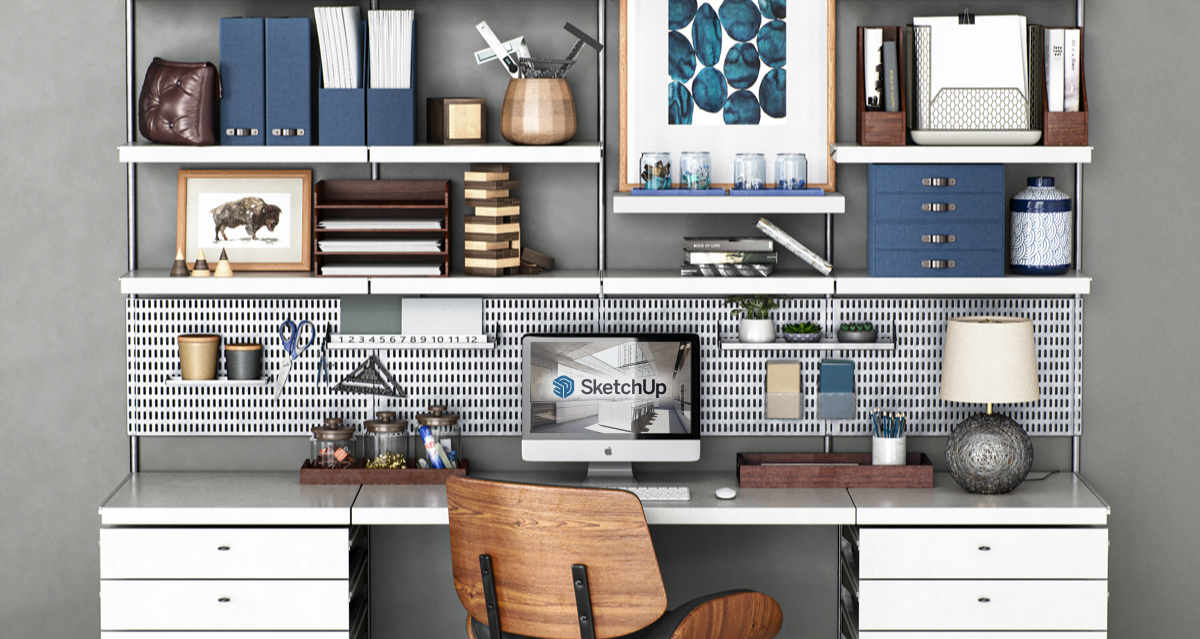The realm of 3D modeling has transformed many sectors, from architecture to game design, offering an incredible depth of visualization. SketchUp, a prominent player in this domain, has gained popularity due to its user-friendly interface and robust capabilities. Despite its power, SketchUp users often grapple with integrating 3D models originating from different formats. If you've ever found yourself tangled in such a situation, you've come to the right place! In this comprehensive guide, we'll unveil the mystery behind converting 3D models from various formats into SketchUp-friendly files.
Understanding the SketchUp 3D Model Formats Landscape
Before venturing into the intricacies of the conversion process, it's pivotal to gain an understanding of the types of 3D model formats that SketchUp embraces. The most frequently used are .skp (SketchUp's proprietary file format), .dae (Collada), and .3ds (3D Studio). By translating your 3D models to these formats, you ensure seamless integration into your SketchUp workspace, thereby broadening the scope of your design projects.
A Deep Dive into the Conversion Process
Converting .FBX to SketchUp Formats
A common 3D file format is the FBX, widely utilized due to its ability to support complex 3D models along with a range of animation data. Although it's extensively used, SketchUp does not natively support the FBX file format. However, don't let this discourage you!
The workaround involves an intermediary program, such as Autodesk's FBX Converter. This software, free to download, allows you to convert your FBX files into a SketchUp compatible format like .dae. Once your file is converted, it can be effortlessly imported into SketchUp, enabling you to further edit and incorporate it into your projects.
Converting .OBJ to SketchUp Formats
The OBJ file format is another popular choice in the world of 3D modeling, celebrated for its versatility and wide acceptance among various software. To convert an OBJ file to a SketchUp-supported format, you can leverage a program like Blender. This open-source 3D creation suite allows you to import your OBJ files, and then export them as .dae files. This .dae file can then be directly imported into SketchUp, ready for you to utilize in your design endeavors.
Converting .STL to SketchUp Formats
The STL file format reigns supreme in the realm of 3D printing. If you have an STL file that you wish to bring into SketchUp, you can utilize the free SketchUp STL extension. With this handy extension installed, you're equipped to import your STL file directly into SketchUp, saving you the hassle of additional conversion steps.
Best Practices for Converting 3D Models to SketchUp Formats
While the process of converting 3D models can appear straightforward, it's crucial to maintain an eagle's eye on a few best practices to ensure optimal results:
Maintain Scale and Proportions:
During the conversion process, the scale and proportions of the original 3D model might get distorted due to differing units in different software. Therefore, it's essential to double-check and adjust these parameters in SketchUp after importing.
Texture Mapping:
During conversion, some data, such as texture maps, may be lost or altered. Always be prepared to reapply textures within SketchUp to ensure the accuracy of your models.
Optimize Models:
3D models with a high number of polygons can potentially slow down SketchUp. Therefore, always aim to optimize your 3D models, reducing the polygon count without sacrificing significant detail.
Component Organization:
When importing 3D models into SketchUp, remember to organize them properly. Grouping related components together makes your models more manageable and can drastically improve your workflow.
Software Tools for Efficient Conversion
While we've discussed a few handy tools for conversion, such as Autodesk's FBX Converter and Blender, there are several other tools out there that can make your conversion process smoother. MeshLab and SketchUp's 3D Warehouse offer additional methods of converting and optimizing your 3D models, and it's worthwhile to explore these tools to find what works best for your specific needs.
Understanding and Overcoming Conversion Challenges
Each 3D model format has its own unique structure and features, so when converting between formats, it's natural to encounter challenges. The most common issues relate to data loss, incompatibility issues, and high polygon count, which can all affect performance. Having a deep understanding of these challenges can help you find appropriate solutions quickly and efficiently.
Data Loss:
During the conversion process, certain information such as texture, lighting, and shading might get lost or distorted. To avoid this, it's always a good idea to save the original files and make copies before starting the conversion process. This way, you can always refer back to the original model if needed.
Incompatibility Issues:
Each 3D modeling software has its unique way of interpreting and displaying 3D data. Thus, a model that looks perfect in one program might appear broken in another. Resolving these issues usually involves manually fixing the problems within SketchUp.
High Polygon Count:
Complex models with a high number of polygons can slow down your workflow and impact performance. To overcome this, try using tools to reduce the polygon count without losing too much detail.
Conclusion
Converting 3D models to SketchUp compatible formats needn't be a hurdle. With the right tools and practices, you can smoothly integrate diverse 3D assets into your SketchUp projects, thereby maximizing your design possibilities and productivity. Whether you're a novice designer or a seasoned pro, mastering these conversion techniques is a must-have skill in your 3D modeling arsenal.
Are you in search of quality 3D models to enhance your SketchUp projects? Look no further than our extensive collection on 3d-baza.com. Propel your projects into the 3D stratosphere with our top-notch models today!

